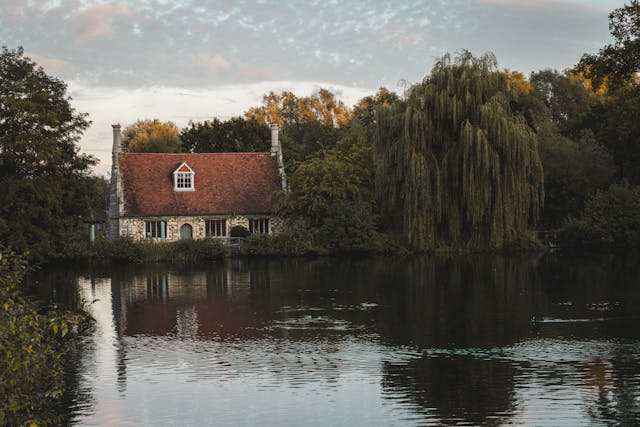Water damage can happen unexpectedly, and when it does, it can cause a significant amount of stress. Whether it’s from a leaking pipe, a burst water heater, or a natural disaster, filing a water damage claim can be a crucial step in getting your home back to normal. But navigating the insurance process can be tricky if you don’t know where to start. This guide will walk you through the essential steps for filing a water damage claim, what to expect, and how to ensure that your home is adequately covered.
Understanding Water Damage and Insurance Coverage
What is Water Damage?
Water damage refers to any destruction caused by water seeping into areas it shouldn’t be. This could come from a variety of sources, including flooding, leaky roofs, burst pipes, or even clogged drains. It can affect everything from furniture to flooring and, if not properly addressed, may even lead to structural issues.
Does Home Insurance Cover Water Damage?
Homeowners insurance typically covers water damage under certain circumstances, but it’s important to understand the specifics. Generally, sudden and accidental water damage, such as a burst pipe or a storm-related leak, will be covered. However, damage from neglect, poor maintenance, or flooding may not be covered unless you have additional coverage like flood insurance.
The Water Damage Claims Process: Step-by-Step
Step 1: Assess the Damage
Before anything else, take a deep breath and assess the damage. It’s easy to panic when dealing with a flood or leak, but a quick evaluation can help you determine the extent of the destruction. Identify the source of the water and stop it if possible (e.g., turning off the main water valve if it’s a burst pipe). Then, make sure to take photos or videos of all affected areas and belongings. Detailed documentation will be crucial when you file your claim.
Step 2: Contact Your Insurance Company
Once you’ve assessed the damage and documented it, your next step is to call your insurance company. Be prepared with your policy number, a description of the damage, and the photos or videos you’ve gathered. The insurance representative will guide you through the process and inform you of the necessary steps for filing a claim.
Step 3: File the Claim
Most insurers allow you to file a claim online, over the phone, or through a mobile app. Provide all the requested information, including the extent of the water damage, the cause (if known), and your documentation. It’s crucial to be as detailed as possible to avoid delays.
Step 4: Schedule an Adjuster’s Visit
Once the claim is filed, the insurance company will likely send an adjuster to inspect the damage. The adjuster will assess the damage, take notes, and determine the amount your insurance will cover. It’s important to be present during the adjuster’s visit to ensure they have all the necessary information to evaluate your claim correctly.
Step 5: Get Repair Estimates
After the adjuster’s visit, you may need to get repair estimates from contractors or water damage restoration companies. In many cases, the insurance company will ask for these estimates to determine the cost of repairs and whether additional services like mold remediation will be required.
Step 6: Review Your Settlement Offer
After reviewing the estimates and assessing the situation, the insurance company will provide you with a settlement offer. This will outline how much they’re willing to pay for repairs, minus any deductibles and based on your policy’s coverage limits. It’s important to carefully review this offer and make sure it covers the full extent of the damage. If you feel the offer is too low, you can negotiate with the insurer.
Step 7: Make Repairs
Once you’ve agreed to a settlement, you can begin making repairs. In some cases, you may need to pay out-of-pocket for certain services upfront and then reimburse yourself through your settlement. Be sure to keep all receipts and invoices for reimbursement.
Step 8: Close the Claim
Once the repairs are complete, and all necessary payments have been made, your insurance company will close the claim. At this point, your home should be fully restored, and any financial support from your insurance company should be finalized.
What You Need to Know About Water Damage Coverage
What’s Covered?
Homeowners insurance typically covers water damage that’s sudden and accidental. This might include:
-
Burst pipes: If a pipe breaks unexpectedly and floods your home.
-
Leaking roofs: Storms that damage your roof, causing leaks.
-
Sewer backups: If your sewer line backs up into your home due to a blockage.
-
Appliance failure: If an appliance like a washing machine or water heater malfunctions and causes a leak.
What’s Not Covered?
Some types of water damage may not be covered by your standard homeowner’s policy, including:
-
Flooding: Damage from rising water, like from a river or heavy rain, isn’t covered by a standard home insurance policy. You’ll need flood insurance for that.
-
Negligence: If the damage was caused by lack of maintenance, like failing to fix a known leak, it may not be covered.
-
Mold growth: Mold that develops as a result of water damage is often not covered unless it’s caused by a covered event, and even then, it may require a separate policy.
How to Prevent Water Damage in the Future
Regular Maintenance
Prevention is always better than cure, and regular home maintenance can save you from the hassle of filing a claim. Make sure to inspect pipes for leaks, clean gutters, and check appliances for signs of wear and tear. A proactive approach can help you avoid costly repairs and water damage.
Install a Water Leak Detection System
Water leak detection systems can alert you to leaks early on, allowing you to address issues before they become a major problem. Some insurance companies even offer discounts for homeowners who install these systems, as they reduce the risk of water damage.
Install Sump Pumps and Flood Barriers
If your home is in an area prone to flooding, consider installing a sump pump or flood barriers. These can help divert water away from your foundation and reduce the risk of water entering your home.
Common Mistakes to Avoid When Filing a Water Damage Claim
Delaying the Claim
Time is of the essence when dealing with water damage. Delaying the claim can cause further damage to your home, especially if water continues to leak or if mold begins to develop. Always file your claim as soon as possible after the damage occurs.
Neglecting to Document the Damage
Without proper documentation, your insurance company may not fully understand the extent of the damage. Always take photos and videos of the affected areas, and keep a record of all communication with contractors or adjusters.
Assuming All Water Damage is Covered
Not all water damage is covered by homeowners insurance. Before filing a claim, review your policy to understand the coverage limits and exclusions. If you’re unsure, contact your insurance agent for clarification.
Conclusion
Filing a water damage claim doesn’t have to be a daunting task if you know what steps to take. By acting quickly, documenting the damage thoroughly, and working closely with your insurance provider, you can help ensure that your home is restored and your claim is handled smoothly. Remember, the key to a successful claim is timely action, clear communication, and understanding your coverage.
FAQs
1. Does homeowners insurance cover water damage from a storm?
Yes, most homeowners insurance policies cover water damage caused by storms, such as roof leaks or flooding from heavy rain. However, flooding from natural disasters like hurricanes may require separate flood insurance.
2. Will my insurance cover the cost of mold remediation after water damage?
Mold remediation may be covered by your policy if the mold growth is caused by a covered event, such as a burst pipe. However, if the mold is due to neglect or long-term water exposure, it might not be covered.
3. How quickly do I need to file a water damage claim?
It’s important to file your claim as soon as possible—ideally within a few days of the damage occurring. Delaying the claim could result in further damage to your home and make it more difficult to receive coverage.
4. Can I file a claim if I accidentally caused the water damage?
Yes, you can still file a claim if the water damage was accidental. However, your insurance company will assess whether the cause of the damage is covered under your policy.
5. Do I need to hire a professional to fix the water damage?
While you can repair some minor damage yourself, it’s usually a good idea to hire a professional to handle the repairs, especially if the damage is extensive or if you need a water damage restoration company to mitigate further risks like mold growth.
Please don’t forget to leave a review.


